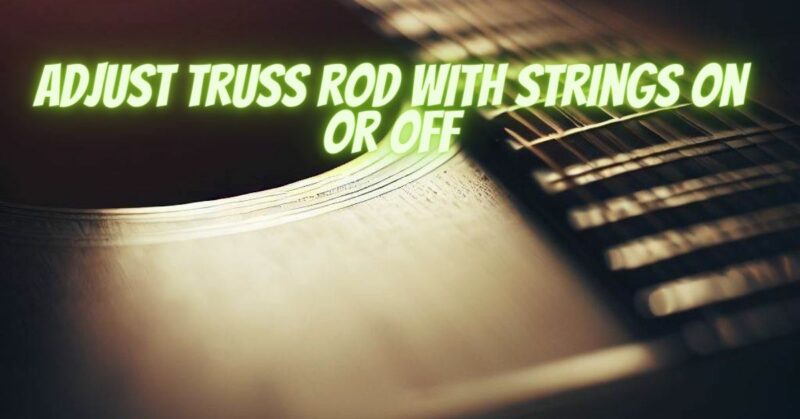When it comes to adjusting the truss rod, a common question arises: Should you perform the adjustment with the strings on or off the guitar? In this article, we will explore the pros and cons of adjusting the truss rod with the strings on or off, helping you understand the considerations involved in this decision.
Adjusting the Truss Rod with Strings On: Pros:
- Real-Time Assessment: By adjusting the truss rod with the strings on, you can assess the immediate impact of the adjustment on the neck relief, string action, and playability. This allows for more accurate fine-tuning while considering the actual string tension.
- String Height Considerations: Truss rod adjustments can affect the string height or action of the guitar. Making adjustments with the strings on allows you to observe and address any changes in the string action during the process.
Cons:
- Increased Tension and Risk: Adjusting the truss rod with the strings on puts additional tension on the neck, which can make it more challenging to turn the truss rod and potentially increase the risk of damaging the guitar if not performed carefully.
- Restricted Access: Depending on the guitar design, access to the truss rod adjustment point may be limited or obstructed by the strings. This can make it more difficult to make precise adjustments and may require additional care and patience.
Adjusting the Truss Rod with Strings Off: Pros:
- Reduced Tension: Removing the strings before adjusting the truss rod reduces the tension on the neck. This can make it easier to turn the truss rod and minimize the risk of causing damage to the instrument during the adjustment process.
- Unrestricted Access: With the strings off, you have unobstructed access to the truss rod adjustment point, allowing for easier and more precise adjustments.
Cons:
- Limited Assessment: Adjusting the truss rod with the strings off means you cannot directly assess the impact of the adjustment on the string action and playability. You will need to restring the guitar and wait for the neck to settle before evaluating the results.
- Delayed Feedback: Removing the strings and restringing the guitar takes time. You may need to wait for the neck to stabilize and for the strings to settle before evaluating the effectiveness of the truss rod adjustment.
Conclusion:
The decision to adjust the truss rod with the strings on or off depends on personal preference and comfort level. Adjusting the truss rod with the strings on allows for real-time assessment of the impact on playability, but it comes with increased tension and potential challenges in accessing the truss rod. On the other hand, adjusting with the strings off reduces tension and provides easier access, but it delays the assessment process and requires additional time for the neck to stabilize. Whichever method you choose, always make small, gradual adjustments and consider seeking professional assistance if you are unsure or uncomfortable performing the truss rod adjustment yourself.


